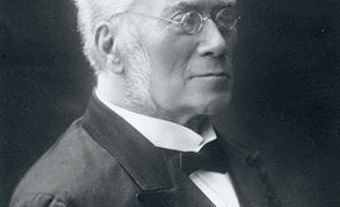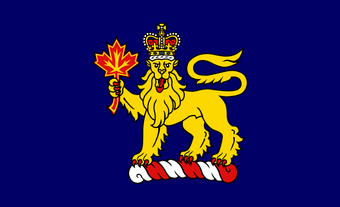Canada is a constitutional monarchy. The Crown is the head of state, and the governor general acts as their representative in Canada. The governor general has extensive ceremonial duties. They fulfill an important role in upholding the traditions of Parliament and other democratic institutions. Inuk leader Mary Simon was formally installed as Canada’s 30th Governor General on 26 July 2021. She is the first Indigenous person to hold Canada’s vice-regal position.

The governor general’s personal standard (flag) flies wherever he or she is in residence. It takes precedence over all other flags in Canada except that of the monarch.
| Name | Term |
| Viscount Monck | 1867-68 |
| Lord Lisgar | 1869-72 |
| Earl of Dufferin | 1872-78 |
| Marquess of Lorne | 1878-83 |
| Marquess of Lansdowne | 1883-88 |
| Baron Stanley of Preston | 1888-93 |
| Earl of Aberdeen | 1893-98 |
| Earl of Minto | 1898-1904 |
| Earl Grey | 1904-11 |
| Duke of Connaught | 1911-16 |
| Duke of Devonshire | 1916-21 |
| Lord Byng | 1921-26 |
| Viscount Willingdon | 1926-31 |
| Earl of Bessborough | 1931-35 |
| Lord Tweedsmuir | 1935-40 |
| Earl of Athlone | 1940-46 |
| Viscount Alexander of Tunis | 1946-52 |
| Vincent Massey | 1952-59 |
| Georges Vanier | 1959-67 |
| Roland Michener | 1967-74 |
| Jules Léger | 1974-79 |
| Edward Schreyer | 1979-84 |
| Jeanne Sauvé | 1984-90 |
| Ramon John Hnatyshyn | 1990-95 |
| Roméo A. LeBlanc | 1995-99 |
| Adrienne Louise Clarkson | 1999-2005 |
| Michaëlle Jean | 2005-10 |
| David Johnston | 2010-17 |
| Julie Payette | 2017-21 |
| Mary Simon | 2021-Present |

 Share on Facebook
Share on Facebook Share on X
Share on X Share by Email
Share by Email Share on Google Classroom
Share on Google Classroom

